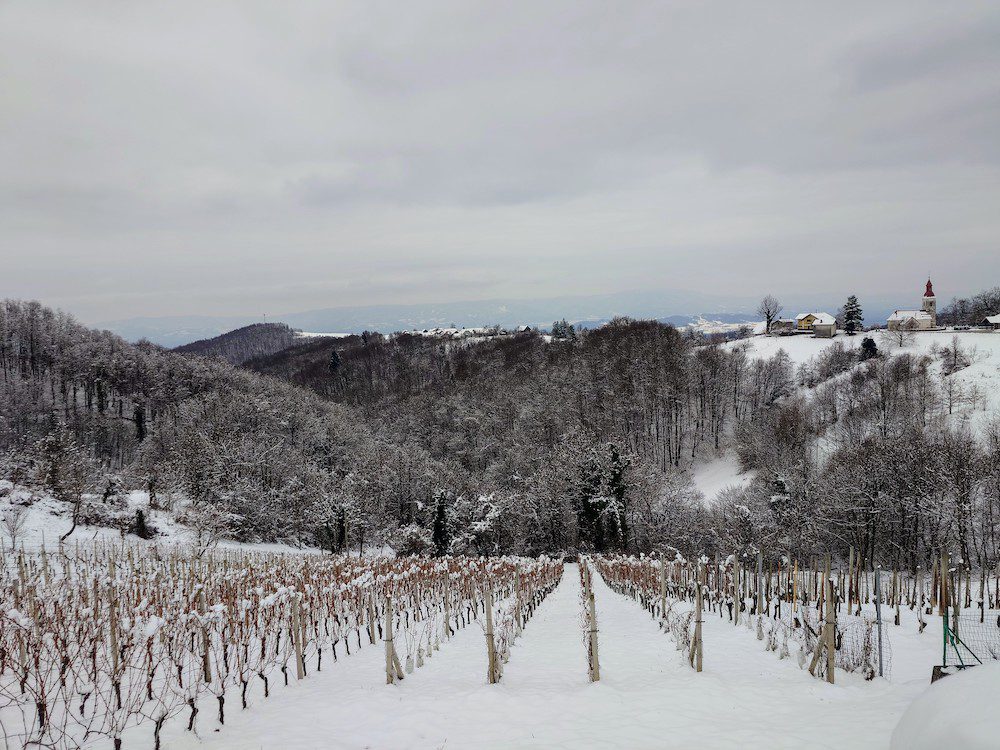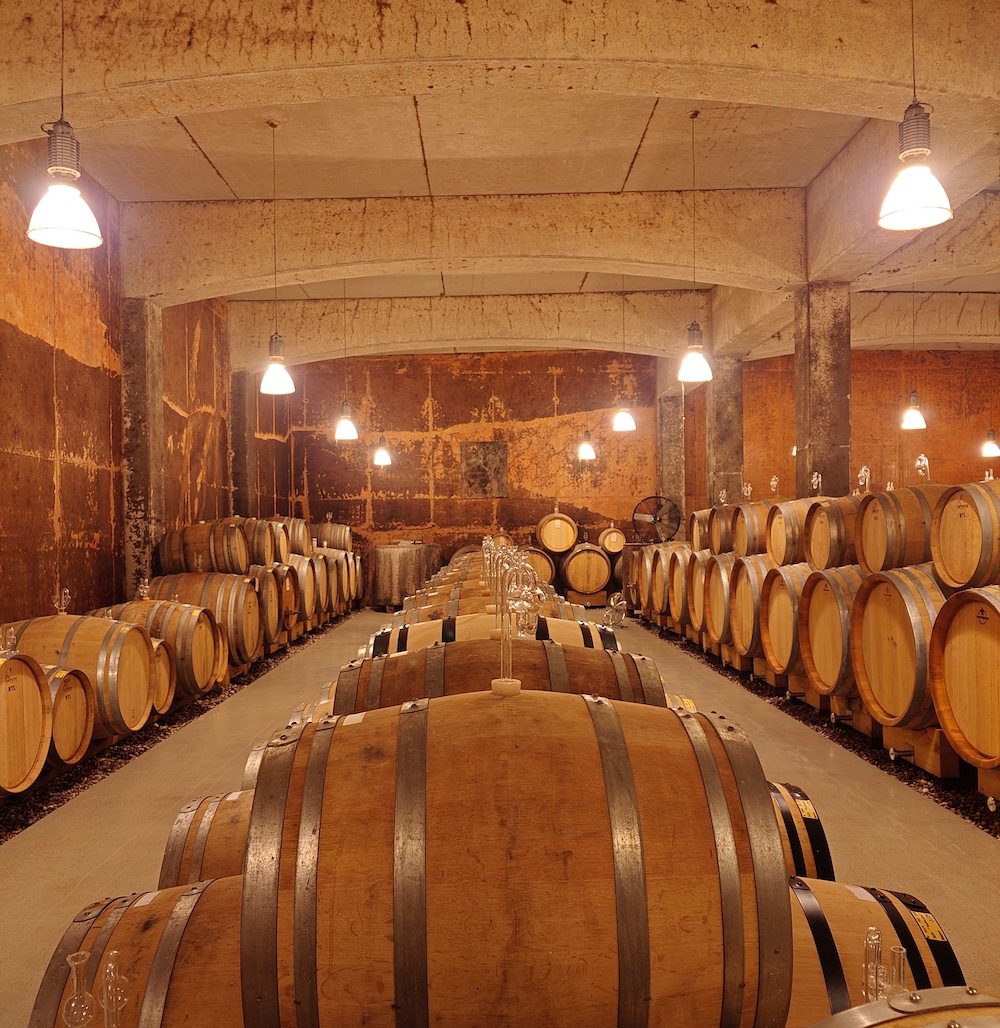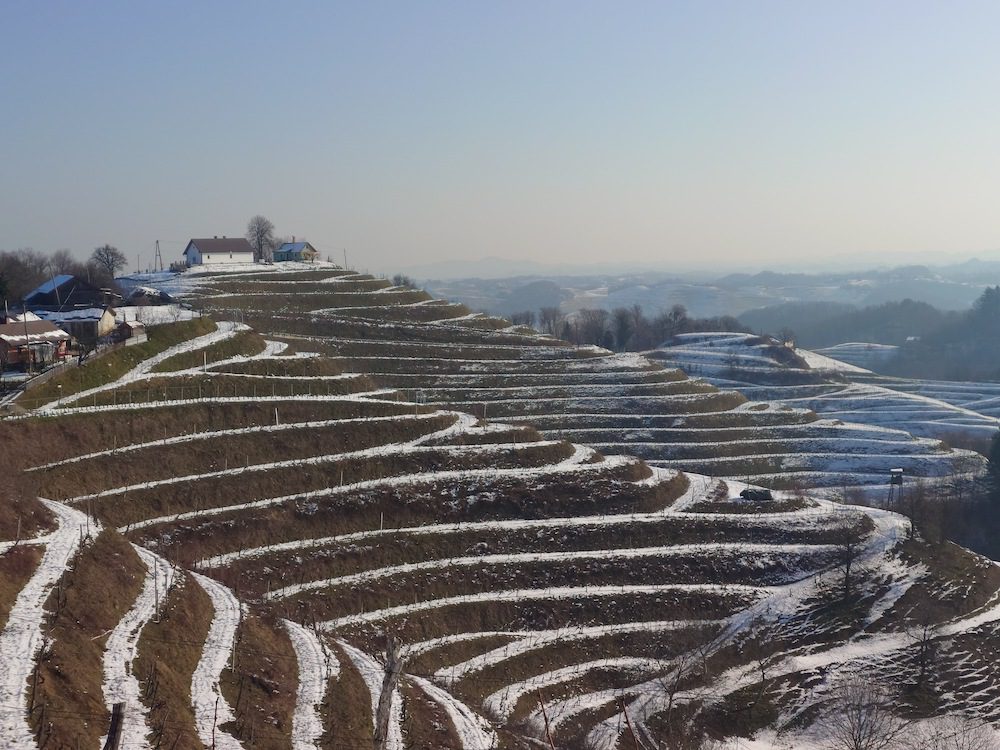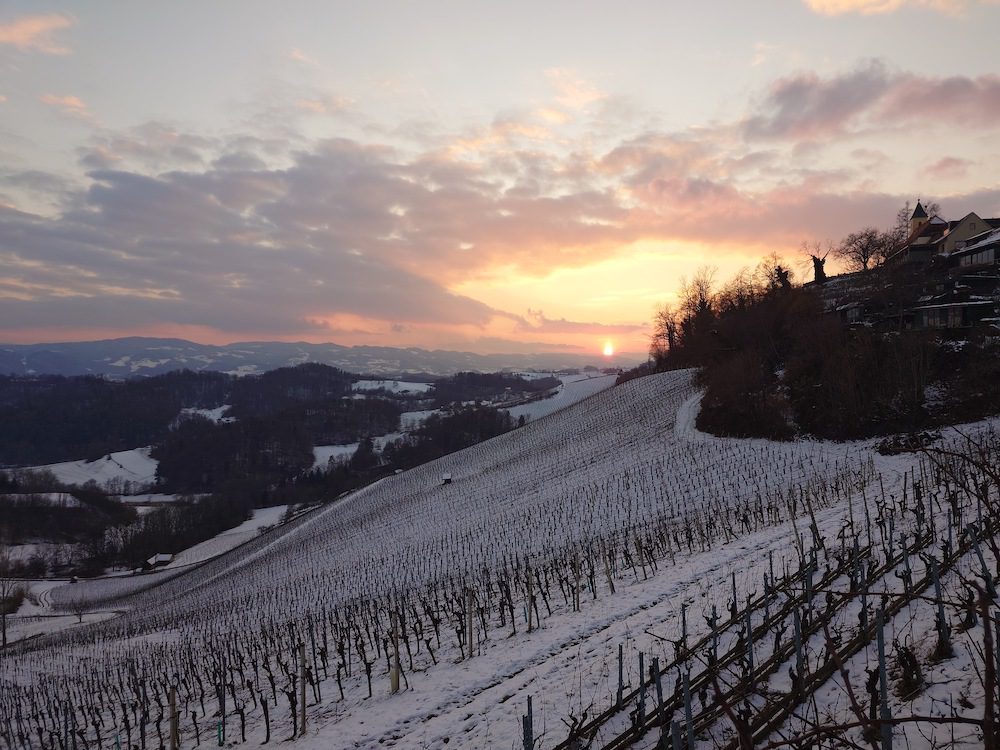Caroline Gilby MW visits five fine Slovenian producers, who are members of the Slovenska Velika Lega organisation, which seeks to convey the story of Slovenia’s most special vineyard wines via plant, place and people.
Velika Lega translates as ‘great location’ if you pop it into a translation app. It forms the name of a relatively new organisation, Slovenska Velika Lega (SVL) – a group of wine producers in Slovenia, with the emphasis firmly on place of origin, and specifically on historically well-regarded locations. In fact, it’s more than that, as they highlight the three Ps of the Plant, the Place and the People – acknowledgment that terroir in wine includes the culture of the people who shape it, as well as soil and climate and so on.
I often highlight the journey of producers in Central & Eastern Europe in the new era, and how it usually began with transforming wine quality through winemaking, and all the usual stuff like reduced yields, shiny stainless steel and fresh new barrels. But that only goes so far, and the best producers in the region are now developing real confidence in their grapes and place. As a result, winemaking can take a back seat, becoming more thoughtful and allowing the grapes and place to take centre stage. So, it’s very welcome to see organisations like this whereby producers share these values.
SVL has codified its ideas and built a pyramid of wine qualities (easily recognisable from more established regions). The three levels are SVL Okoliš for regional wines, SVL Vas for village level wines and SVL Lega for single vineyard wines “with a true sense of place”. And as you might expect, there are restrictions on varieties typical of the area, reduced yields and each bottle should display the latitude and longitude of the vineyard. There’s also a category for sparkling producers which emphasises place first and then secondary fermentation in the bottle.
Earlier this year, I jumped at the chance to visit some of these producers when I was in Slovenia for a conference on the place of Slovenia’s most planted red variety Modra Frankinja (aka Blaufränkisch) in gastronomy, but that’s for another story. There are currently 10 members in the SVL association, and I didn’t have time to visit all of them on this trip (I know the others like Bjana, Korenika & Moškon, Edi Simčič, Guerila and Roka of old).
Šuklje
First up was Šuklje, a family winery whose first vines were planted in 1895, just after phylloxera. It’s now run by the 7th generation and led by Katja and Matija Šuklje. Katja is an academic researcher who met her French husband Guillaume Antalick while studying in Stellenbosch. After moving to Australia, they returned to the family vineyards alongside academic life in Slovenia (Guillaume is an oenology professor). Šuklje’s 7 hectares of vineyards are in the unregarded Bela Krajina in southeastern Slovenia, a region isolated by mountains, but only an hour from Rijeka, which is so distinctly Mediterranean and warm, but with cool nights. In the past, this region was known for sweet wines, but dry wines and vineyard selections are the current story.
Katja’s passion project is Chardonnay on the burgundy-like marl at their Plesiviča site, and there’s also good Sauvignon Blanc from Lozice. Modra Frankinja is their most planted grape, which Guillaume believes is “a real sponge for terroir”. A tasting of three 2022 barrel samples, from sites just a few hundred metres apart, made this point very clearly. The colder clays of Lokvica gave a more linear, vibrant red cherry style, while at the other extreme the limestone marl of the Vrbanjka plot within Plešivica gave more generous bilberry and mulberry fruit, and dense but velvety tannins. And a new 2022 Selection Vrbanjka was seriously impressive – unexpected quality from this overlooked region.
Domaine Slapšak

Domaine Slapšak is a Penina (the Slovenian word for sparkling wine) specialist in Dolenjska, the coolest region in southeast Europe, with vineyards reaching 500 metres on well drained flysch. Andrej Slapšak and his sister Urška grew up here, with a family vineyard for Cviček, the local traditional sour red blend. The family came up with the idea of doing something different helped by the arrival of Urška’s partner François Botton, a Champenoise native who had studied and worked in Reims. He helped introduce the concept of doing everything strictly like Champagne, including reserve wines, tracking every plot and paying strict attention to harvest and whole bunch pressing.
The family gradually narrowed their vineyards to three varieties: Chardonnay and Pinot Noir may be obvious but it’s the local Žametna Črnina (velvet black) that is the core of their programme. It’s a distinctly ordinary grape in its normal guise of light red wine but it has emerged as showing serious class for sparkling wines due to its low pH (it can be 2.8 to 2.9 at picking time) and vibrant acidity. Francois believes it has more ageing potential in this region than Chardonnay or Pinot Noir. Certainly, it works well in the beautiful Brut Nature, in the inviting Brut Rosé, and in the winery’s stylish core line Brut Reserve (with 30% Pinot Noir). As an aside, Domaine Slapšak is one of the ‘gang of five’ of Dolenjska producers with a focus on quality sparkling wines, joined by Albiana, Kozinc, Frelih and Huba – all producing wines worth trying, and working together on the idea of a PDO for traditional method sparkling wines in Posavje.
Domaine Ciringa
 The next of the SVL members was Domaine Ciringa and its Austrian owner Tement. Founded by Manfred Tement in 1956, the property is right on the border of Austria and Slovenia (I could cross national borders by stepping out of the door of the cottage where I stayed). Tement started buying vineyards over the border when Slovenia joined the EU in 2004. Today, it owns 20 ha for Domaine Ciringa in Slovenia and 90 ha in Austria, and unusually it has an agreement to vinify the grapes in the Austrian winery without losing the Slovenian identity.
The next of the SVL members was Domaine Ciringa and its Austrian owner Tement. Founded by Manfred Tement in 1956, the property is right on the border of Austria and Slovenia (I could cross national borders by stepping out of the door of the cottage where I stayed). Tement started buying vineyards over the border when Slovenia joined the EU in 2004. Today, it owns 20 ha for Domaine Ciringa in Slovenia and 90 ha in Austria, and unusually it has an agreement to vinify the grapes in the Austrian winery without losing the Slovenian identity.
It’s a single hillside on an ancient coral reef, with the border wiggling through the middle – one ‘grand cru’ divided by World War II, according to Stefan Tement, the younger of the two sons who work in the winery. It’s not easy on these steep slopes, with heavy clay and loam soils, and plenty of rain, but the property has been organic since 2018 and is now biodynamic too (Demeter since 2022).
Stefan admits it’s hard work – and requires lots of time in the vines. He even has to glue tractor tyres to the rims as he needs to work with such low pressure to avoid soil compaction. On the Slovenian side of the border, it’s all Sauvignon Blanc which Stefan reckons is the best grape to express the region. The winemaking uses spontaneous fermentations, and vineyard selections are all barrel-fermented and lees aged – quite how they keep track of all their barrels and tanks is astonishing.
What’s in the bottle certainly supports my view that Central Europe can be an amazing place for Sauvignon, with a distinctive quality all of its own. And it’s ageworthy too – the 2011 Ciringa Reserve was gloriously fresh and alive. There’s also a wonderfully vivid parcel selection called Pruh from a vineyard just below a Roman limestone quarry, with 46 months on lees.
Marof
Uroš Valcl of Marof, another SVL member, also popped in to show his latest efforts from Prekmurje in Slovenia’s far northeast, not far from Austria’s Eisenberg. It’s a few years since I visited in person and the winery has reduced its vineyard area to 22 ha, in from the original 45 ha, to focus on the best locations. Goričko is the winery’s calling card range, featuring an attractive white blend and a Sylvaner from 45-year-old vines as standouts. The flagship single vineyard wines include a smart Kramarovči Chardonnay from 50-year-old vines; mouthwatering, lingering Bodonci Sauvignon Blanc aged in large Austrian casks; and Mačkovci Modra Frankinja in a juicy and more elegant style than in the past.
Vino Gross

The final stop on this tour was Vino Gross in the stunning district of Haloze. Michael Gross is Austrian, but he and his wife Maria settled here in 2016 to start their own story, leaving the Austrian part of the winery to Michael’s older brother. Michael’s father had started the winery when he bought a house in the region as a place to relax – but it didn’t quite work out like that. This is a region of steep terraces installed by the state in the Yugoslavian era, and Michael took over one abandoned plot in 2015 because he drove past it every day. It made him cross, so he drove to the state office and asked to rent it.
The original plan had been to work with old vines, but it turned out that these are often not the right material for quality (the past was all about quantity). Furmint (called Šipon locally) is his most important grape – he even got some loose-bunch cuttings from Szepsy in Tokaj as the traditional Slovenian material is lower quality with tight bunches and very high acidity. Gross is certified organic, and he uses biodynamic methods and minimal intervention winemaking, helped by typically low pHs of around 3.1 and he explains that using SO2 is not a dogma – he will only use a little if he thinks it essential.
All his wines are spontaneously fermented and aged on lees in big oak, with almost no stirring, then kept for a further year in steel before being bottled unfiltered – he doesn’t even own a filter. His range includes appealing regional blends from Haloze and Maribor, and then an impressive range of vineyard selections, including a very textural, stony Gorca Furmint; herby, flinty, lime pith Colleš Sauvignon; and a lovely, juicy, sapid Korže blend of 70% Sauvignon and 30% Furmint, and there’s a vibrant saline Penina, but not every year.
Slovenska Velika Lega is undoubtedly showing positive steps in the direction of telling the story of Slovenia’s most special vineyard wines and bringing together producers who are building that story of plant, place and people.
SVL Producers available in UK
Vino Gross – Newcomer Wines
Marof – Theatre of Wine
Edi Simčič – via Bancroft Wines
Domaine Ciringa – via Top Selection
Guerila – via Alliance Wine
Main image: Domaine Ciringa

